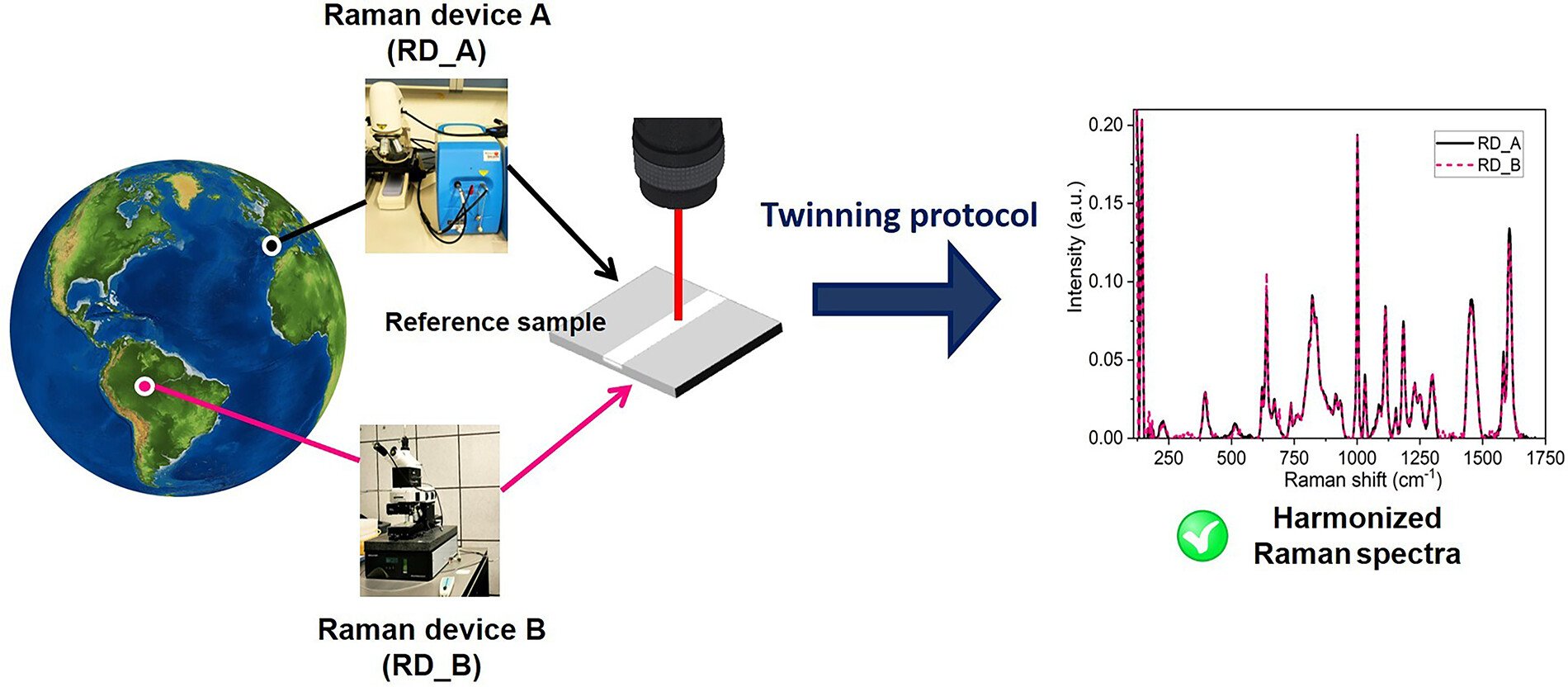New Protocol for Twinning of Raman Devices Toward a Raman Intensity Harmonization
Publication category: Research article
Authors: María Fernández-Álvarez, Alberto Moure, Julián Jiménez Reinosa , Enrique Lozano Diz, José Francisco Fernández
Publication date: 14 June 2024
DOI: https://doi.org/10.1177/0003702824126037
Language: English
Abstract:
The use of Raman spectroscopy has rapidly been on the rise across a great number of industries where comparability, reproducibility, and reliability of the data are of paramount importance. However, controlling the intensity of the Raman signal depends on a large number of factors such as the wavelength of the laser light, the optical components of each device, or the number of molecules in the illuminated volume. For this reason, in this study, a new protocol has been applied to twin Raman devices to achieve a conversion of the signal between them, by pairing the intensity response of the units using a reference sample. The new reference material is a homogenous dispersion of a 0.5 wt% anatase (titanium dioxide, or TiO2) in an epoxy resin matrix, with deviations <2.5% in Raman intensity across the reference material. The proposed protocol for Raman-twinned devices takes a well-defined approach that leads to obtaining a correction factor that relates the differences in the signal intensity between the two Raman devices, in order to obtain the same Raman intensity counts. The performance of the proposed method was evaluated based on the data from the devices, which presented the most common user cases: twinning Raman devices of the non-confocal same model for two different wavelengths; and twinning confocal and non-confocal devices. The results obtained show that the protocol has worked for both of the Raman twinning cases, allowing the Raman intensity harmonization of Raman spectra between two different devices.
Keywords: Raman spectroscopy, characterization, harmonization, protocol, material

